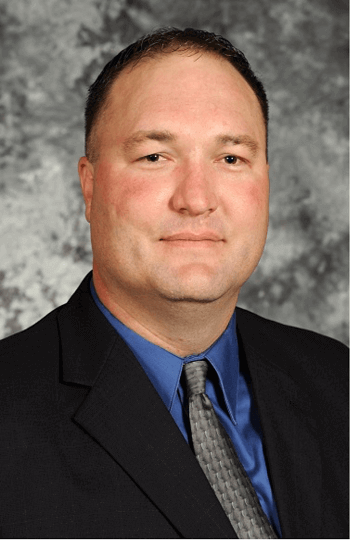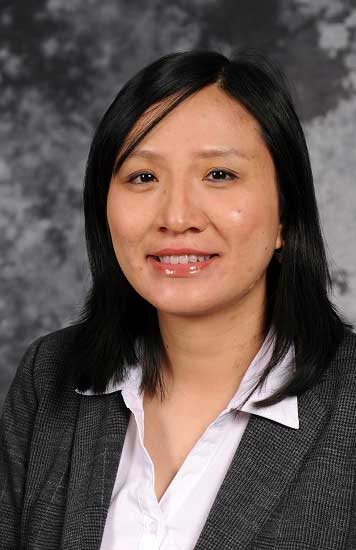
Decision Science, Visualization and Human Computer Interaction
Developing models and simulations that shed light on how human behavior affects decisions.
The decision science pillar has potentially been best described by Wong-Parodi et al in their 2016 article in Nature Climate Change entitled “A decision science approach for integrating social science in climate and energy solutions.” In that article, decision science was described as providing analytical frameworks that can accommodate the development of decisions for a diverse set of domains by formalizing the decision-making process. The decision-making process is formalized by characterizing the choices that a rational actor would make with perfect information and contrasting thaw with the decisions made by actors under bounded rationality, where only limited information is available. By understanding the differences, strategies are then developed to bridge the gap between the ideal decision and observed reality. Ultimately, the decision science pillar seeks to collaboratively work with subject matter experts and decision-makers to facilitate decisions that incorporate both the value outcomes as well as the risks and uncertainties.
Decision science draws from many disciplines including but not limited to behavioral economics, game theory, statistics, and risk analysis; to develop models and simulations that shed light on how uncertainty and human behavior affect decisions. The goal is to provide analysis that can be clearly communicated and utilized to make decisions in line with specified ideals.
The Applied Visualization Laboratory (AVL) staff combines hardware, software, and interaction expertise to develop innovative 3D capabilities in scientific data visualization, immersive analytics, virtual training experiences, remote collaboration and telepresence, and CAD/engineering modeling. We develop and deploy these capabilities on a variety of platforms: head mounted displays (HoloLens 2, Oculus Quest, HTC Vive Pro, Magic Leap), through the web and desktop (A-Frame, Unity), and in our state-of-the-art four-sided CAVE. We also employ a high-precision, high-resolution LiDAR scanner to create true to scale, true to life immersive environments.
Immersive VR/XR/AR at AVL is currently applied to multiple disciplines of science and research that support the key strategies at INL and CAES to advance analysis, explore data and models, and presentation of results.
Visualization is our passion and we have incorporated education and outreach into our mission through internships and collaborations with universities. We also hold positions on a variety of boards and review panels in the visualization community.
We see collaboration as a key for success and welcome opportunities to strengthen your research.
Collaborations & Projects:
Logistics and scale-up of cellulosic biomass supply chains – Developed a project with ExxonMobil to inform decisions around supply chain topologies that can be scaled to supply domestic cellulosic biorefineries consuming at minimum 10,000 dry tons/day, while identifying the economic and technological gaps. Lessons from failed biorefineries suggest that managing feedstock quality throughout the supply chain is necessary to achieve nameplate biorefinery capacity. INL will investigate biomass midstream operations utilizing a Quality by Design approach to meet the critical quality factors that will facilitate scale-up.
Decision support for recycling of e-wastes – Received funding from the Remade Institute, to develop a decision support framework (DSF) for e-waste recycling and refurbishment that is spatially explicit and accounts for dynamic market conditions for recycling recycled and refurbished commodities. This DSF will identify optimal supply chain configurations that reduce recycling/refurbishing costs and energy consumption based on available technology, market conditions, and the spatiotemporal relationships of supply chain actors. The purpose of the model is to provide insights on questions important to the industry (e.g., What configuration of machinery maximizes the recovery of a certain product stream? How far can the collection radius be increased to capitalize on favorable market conditions? etc.) Additionally, the model will improve industry performance (recycling rate, cost, efficiency of material use in highest valued applications, etc.) by providing a system-level understanding of e-waste recycling supply chains from local to continental scales.
Land suitability for the production of dedicated bioenergy crops – A geospatial multi criteria site suitability framework was developed under the Integrated Landscape Management (ILM) project to support decision-making for incorporating bioenergy crop production within agricultural landscapes. Converting low-yielding subfields within agricultural production fields to energy crop production has been demonstrated to improve field profitability, biomass availability and soil carbon sequestration, and mitigate soil erosion. ILM is a strategy developed to integrate biomass production into agricultural production fields to reduce feedstock access costs while improving the sustainability of crop production systems. The purpose of the framework is to identify fields in which an ILM strategy will likely result in maximized economic and environmental benefits. Evaluation criteria were developed across three domains: agronomic, field operability, and environmental. The set of criterias was established to develop a linear fuzzy-logic prediction model with binary constraints, which was used to calculate the site suitability index for each field. Built using open source software and data, the framework is agile, computationally efficient, and capable of assessing large regions spanning multiple counties.
Simulating the variability impacts to preprocessing systems – Utilized discrete event simulation to analyze the impact of feedstock variability on the economics and equipment decisions for first generation cellulosic biorefineries. The method utilizes a mathematical/logical model of the physical system that portrays state changes at precise points in simulated time. Through the use of this model, we were able to define a new metric, Overall Operating Effectiveness, that summarizes the performance of the system in terms of both material quality and attainment of operational capacity. Overall Operating Effectiveness is calculated by taking the product of the percentage of capacity achieved and the percentage of the units of material that meet a defined quality specification. Overall Operating Effectiveness has benefits over more traditional metrics of system performance in that both throughput and output quality are considered.

|

Decision Support for Recycling of e-Waste
Received funding from the Remade Institute, to develop a decision support framework (DSF) for e-waste recycling and refurbishment. The DSF provides insights on questions important to the industry and will improve industry performance by providing a system-level understanding of e-waste recycling supply chains from local to continental scales.

|

Land Suitability for Production of Dedicated Bioenergy Crops
A geospatial multi-criteria site suitability framework was developed to support decision making for incorporating bioenergy crop production within agricultural landscapes.
Capabilities:
High Performance Computing (HPC)
Nuclear Science User Facility (NSUF) High Performance Computing (HPC) resources offered through Idaho National Laboratory provide scientific computing capabilities to support efforts in advanced modeling and simulation. These resources support a wide range of research activities, including performance of materials in harsh environments (such as the effects of irradiation and high temperatures), performance of existing light water and advanced nuclear reactors, and multiscale multiphysics analysis of nuclear fuel performance.
INL HPC computing resources are available to industry, universities, national laboratories, and federal agencies to support research and development. Access is generally granted for research related to the DOE Office of Nuclear Energy and INL’s mission focusing on nuclear energy development, workforce development, and education.
Resources
Sawtooth: an HPE SGI 8600-based system with 99,792 cores, 403 TB of memory and a LINPACK rating of 5.6 Petaflop/s. Sawtooth’s network is a nine-dimensional enhanced hypercube utilizing EDR and HDR InfiniBand. Individual compute nodes contain dual Xeon Platinum 8268 processors with 24 cores each. The majority of compute nodes contain 196 GB of memory while twenty-seven contain 384 GB of memory coupled with four NVIDIA V100 GPUs with 32 GB of on-GPU memory each. Sawtooth came online in late 2019 and ranked #37 on the November 2019 TOP500 list.
Lemhi: a Dell 6420-based system with 20,160 cores, 94 TB of memory and a LINPACK rating of 1.0 Petaflop/s. Lemhi’s network is an OmniPath fat tree. Individual compute nodes contain dual Xeon Gold 6148 processors with 20 cores each and 192 GB of memory. Lemhi came online in Fall 2018 and ranked #427 on the November 2018 TOP500 list.
Falcon: a SGI ICE-X distributed memory system with 34,992 cores, 121 TB of memory and a LINPACK rating of 1.1 Petaflop/s. Falcon’s network is a seven-dimensional enhanced hypercube utilizing FDR InfiniBand. Individual compute nodes contain dual Xeon E5-2695 v4 processors with 18 cores each and 128 GB of memory. Falcon came online in Fall 2014 and ranked #97 on the November 2014 TOP500 list.
Applied Visualization Laboratory (AVL)
The Applied Visualization Laboratory contains several 3D immersive environments for scientists and engineers to walk into their data, examine it, and provide deep analysis in pursuit of their research. As mixed, virtual, and augmented reality technology evolves, the opportunities for portable, in-depth analysis of complex data sets increases. Augmented reality solutions are envisioned to allow researchers to have CAVE-like experiences anywhere. Web-based 3-D geographic information systems, mobile applications (for both phone and tablet) and serious games (games built for training or educational purposes) allow users to conduct research at their desks or in the field, enabling discovery outside the lab. Virtual reality exploration systems offer the ability to create visualizations of large data sets that can be projected and run in real-time simulations. Using six-degrees-of-freedom input devices – which allow a body to move forward and backward, up and down, left to right – and stereoscopic output, they offer the benefits of more realistic interaction.
The Center for Advanced Energy Studies (CAES) opened its first Cave Automatic Virtual Environment (CAVE) in 2010. With the new CAVE installed in 2017, CAES’s Applied Visualization Laboratory is even better equipped to provide researchers from universities, industry and government agencies with a user facility where they can visualize and address scientific and technical challenges.
Publications:
| Pillar | Date | Citations |
|---|---|---|
| Artificial Intelligence | 2021 | Shaya Wolf, Rita Foster, Jed Haile, Mike Borowczak “Data-Driven Suitability Analysis to Enable Machine Learning Explainability and Security” IEEE Explore |
| Artificial Intelligence | 2021 | Kunz, M. Ross, et al. "Early battery performance prediction for mixed use charging profiles using hierarchal machine learning" Batteries & Supercaps 2021, 4, 1186. |
| Artificial Intelligence | 2021 | Rafer Cooley, Michael Cutshaw, Shaya Wolf, Rita Foster, Jed Haile, Mike Borowczak, 2021, “Comparing Ransomware using TLSH and @DisCo Analysis Frameworks,” Idaho National Lab, National and Homeland Security, Critical Infrastructure Protection, Idaho Falls, ID. |
| Artificial Intelligence | 2021 | Chen, Bor-Rong, et al. "A machine learning framework for early detection of lithium plating combining multiple physics-based electrochemical signatures." Cell Reports Physical Science 2.3 (2021): 100352 |
| Artificial Intelligence | 2021 | Kunz, M. Ross, et al. "Data driven reaction mechanism estimation via transient kinetics and machine learning." Chemical Engineering Journal 420 (2021): 129610. |
| Artificial Intelligence | 2020 | D.P. Guillen, N. Anderson, C. Krome, R. Boza, L. M. Griffel, J. Zouabe, and A. Al Rashdan, 2020, "A RELAP5-3D/LSTM Model for the Analysis of Drywell Cooling Fan Failure," Progress in Nuclear Energy 130, December 2020. https://doi.org/10.1016/j.pnucene.2020.103540. |
| Artificial Intelligence | 2020 | Kunz, M. Ross, et al. "Probability theory for inverse diffusion: Extracting the transport/kinetic time-dependence from transient experiments." Chemical Engineering Journal 402 (2020): 125985 https://www.sciencedirect.com/science/article/pii/S1385894720321136 |
| Artificial Intelligence | 2020 | Manjunatha, K, A. L. Mack, V. Agarwal, D. Adams, and D. Koester, 2020, "Diagnosis of corrosion processes in nuclear power plants secondary piping structures", ASME Pressure Vessels and Piping Conference, July – August (held virtually). |
| Artificial Intelligence | 2020 | Gentillon, C., C. L. Atwood, A. L. Mack, and Z. Ma, 2020, "Evaluation of weakly informed priors for FLEX data", INL/EXT-20-58327, Idaho Falls, ID, USA. |
| Artificial Intelligence | 2020 | Garcia, H., S. Aumeier, A. Al Rashdan, and B. Rolston, 2020, "Secure embedded intelligence in nuclear systems: Framework and method", Annals of Nuclear Energy, accepted for publication. DOI:10.1016/j.anucene.2019.107261. |
| Artificial Intelligence | 2019 | V. Narcisi, P. Lorusso, F. Giannetti, A. Alfonsi, G. Caruso, "Uncertainty Quantification method for RELAP5-3D© using RAVEN and application on NACIE experiments", Annals of Nuclear Energy, vol. 127, pp. 419-432, 2019 |
| Artificial Intelligence | 2019 | A. S. Epiney, A. Alfonsi, C. Parisi, R. Szilard, "RISMC Industry Application #1 (ECCS/LOCA): Core characterization automation: Lattice Codes interface for PHISICS/RELAP5-3D", Nuclear Engineering and Design, 345, pp-15-27, 2019 |
| Artificial Intelligence | 2019 | A. Alfonsi, C. Wang, J. Cogliati, D. Mandelli, C. Rabiti "Status of Adaptive Surrogates within the RAVEN framework", Idaho National Laboratory, Idaho Falls, Idaho, INL/EXT 17 43438 |
| Artificial Intelligence | 2019 | Guillen, D., N. Anderson, C. Krome, R. Boza, M. Griffel, J. Zouabe, and A. Al-Rashdan, 2019, "The application of physics-informed machine-learning to predict drywell cooling fan failure", Proceedings of the Big Data for Nuclear Power Plants Workshop 2019. |
| Artificial Intelligence | 2019 | Garcia, H., S. Aumeier, and A. Al Rashdan, 2019, "Integrated state awareness through secure embedded intelligence in nuclear systems: Opportunities and implications", Nuclear Science and Engineering, accepted for publication. DOI:10.1080/00295639.2019.1698237. |
| Artificial Intelligence | 2019 | Al Rashdan, A., M. Griffel, R. Boza, and D. P. Guillen, 2019, "Subtle process anomalies detection using machine learning methods", INL/EXT-19-55629, Idaho Falls, ID, USA. |
| Artificial Intelligence | 2019 | Al Rashdan, A., C. Krome, S. St. Germain, J. Corporan, K. Ruppert, and J. Rosenlof, 2019, "Method and application of data integration at a nuclear power plant", INL/EXT-19-54294, Idaho Falls, ID, USA. |
| Artificial Intelligence | 2019 | Al Rashdan, A. and D. Roberson, 2019, "A frequency domain control perspective on xenon resistance for load following of thermal nuclear reactors", IEEE Transactions on Nuclear Science., Vol. 66, No. 9, pp. 2034–2041. |
| Artificial Intelligence | 2018 | A. Alfonsi, A. Hummel, J. Chen, G. Strydom, H. Gougar, "Decay Heat Surrogate modeling for High Temperature Reactors", Proceedings of HTR 2018, Warsaw, Poland, October 8-10, 2018 |
| Artificial Intelligence | 2018 | C. Rabiti, A. Alfonsi, A. S. Epiney, "New Simulation Schemes and Capabilities for the PHISICS/RELAP5-3D Coupled Suite", Nuclear Science and Engineering, vol.182, num. 1, pp 104-118 |
| Artificial Intelligence | 2018 | A. Alfonsi, G. Mesina, A. Zoino, N. Anderson, C. Rabiti, "Combining RAVEN, RELAP5-3D and PHISICS for Fuel Cycle and Core Design Analysis", ASME Journal of Nuclear Engineering and Radiation Science, vol. 3, num. 2, # NERS-16-1120 |
| Artificial Intelligence | 2018 | D. Mandelli, D. Maljovec, A. Alfonsi, C. Parisi, P. Talbot, J. Cogliati, C. Smith, "Mining data in a dynamic PRA framework", Progress in Nuclear Energy, 108, 99-110, September 2018. |
| Artificial Intelligence | 2018 | Kunz, M. Ross, et al. "Pulse response analysis using the Y-procedure: A data science approach." Chemical Engineering Science 192 (2018): 46-60 https://www.sciencedirect.com/science/article/pii/S0009250918304561 |
| Artificial Intelligence | 2018 | Medford, Andrew J., et al. "Extracting knowledge from data through catalysis informatics." ACS Catalysis 8.8 (2018): 7403-7429 https://pubs.acs.org/doi/10.1021/acscatal.8b01708 |
| Artificial Intelligence | 2018 | Mandelli, D., C. Wang, S. Staples, C. S. Ritter, A. L. Mack, S. W. St. Germain, A. Alfonsi, C. Rabiti, and R. Kunz, 2018, "Cost risk analysis framework (CRAFT): An integrated risk analysis tool and its application in an industry use case", INL/EXT-18-51442, Idaho Falls, ID, USA. |
| Artificial Intelligence | 2018 | Al Rashdan, A., and T. Mortenson, 2018, "Automation technologies impact on the work process of nuclear power plants", INL/EXT-18-51457, Idaho Falls, ID, USA. |
| Artificial Intelligence | 2018 | Al Rashdan, A., J. Smith, S. St. Germain, C. Ritter, V. Agarwal, R. Boring, T. Ulrich, and J. Hansen, 2018, "Development of a technology roadmap for online monitoring of nuclear power plants", INL/EXT-18-52206, Idaho Falls, ID, USA. |
| Artificial Intelligence | 2017 | C. Picoco, T. Aldemir, V. Rychkov, A. Alfonsi, D. Mandelli, C. Rabiti, "Coupling of RAVEN and MAAP5 for the Dynamic Event Tree analysis of Nuclear Power Plants", proceedings of European Safety and Reliability Conference - ESREL, June 18-22, 2017, Portoroz, Slovenia |
| Artificial Intelligence | 2017 | A. Alfonsi, C. Rabiti, D. Mandelli, "Assembling Multiple Models within the RAVEN Framework", Proceedings of 2017 American Nuclear Society Annual Meeting, June 11-15, 2017, San Francisco |
| Artificial Intelligence | 2017 | A. Alfonsi, C. Wang, D. Mandelli, C. Rabiti, "Adaptive Surrogates within the RAVEN Framework for Dynamic Probabilistic Risk Assessment Analysis", Proceeding of Best Estimate Plus Uncertainty International Conference, Lucca, Italy, May 13-18. |
| Artificial Intelligence | 2016 | A. Alfonsi, D. Mandelli, C. Rabiti "RAVEN Facing the Problem of assembling Multiple Models to Speed up the Uncertainty Quantification and Probabilistic Risk Assessment Analyses" Proceedings of 13th International Conference on Probabilistic Safety Assessment and Management (PSAM 13), Oct. 2-6 2016, Seul, South Korea |
| Artificial Intelligence | 2016 | A. Alfonsi, G. Mesina, A. Zoino, C. Rabiti "A fuel cycle and core design analysis method for new cladding acceptance criteria using PHISICS, RAVEN and RELAP5-3D" Proceedings of the 24th International Conference on Nuclear Engineering (ICONE24), June 26-30, 2016, Charlotte, USA |
| Artificial Intelligence | 2015 | A. Alfonsi, C. Rabiti, D. Mandelli, J. Cogliati, S. Sen, C. Smith, "Improving Limit Surface Search Algorithms in RAVEN Using Acceleration Schemes," INL/EXT-15-36100, July 2015 |
| Artificial Intelligence | 2015 | D. Mandelli, A. Alfonsi, C. Smith, C. Rabiti, "Generation and Use of Reduced Order Models for Safety Applications Using RAVEN", Proceedings American Nuclear Society 2015 Winter Meeting, November 8-12, 2015, Washington, DC, US |
| Artificial Intelligence | 2015 | Farber, J., D. Cole, A. Al Rashdan, and V. Yadav, 2019. "Using kernel density estimation to detect loss-of-coolant accidents in a pressurized water reactor", Nuclear Technology, special issue on Big Data for Nuclear Power Plants, 205(8):1043–1052. |
| Artificial Intelligence | 2015 | Agarwal, V., N. Lybeck, B. Pham, R. Rusaw, and R. Bickford, 2015, "Prognostic and health management of active assets in nuclear power plants", International Journal of Prognostics and Health Management, Special Issue on Nuclear Energy PHM, 6:1–17. |
| Artificial Intelligence | 2015 | Agarwal, V., N. Lybeck, B. Pham, R. Rusaw, and R. Bickford, 2015, "Asset fault signatures for prognostic and health management in the nuclear industry", IEEE Reliability Digest, February 2015. |
| Artificial Intelligence | 2014 | C. Rabiti, D. Mandelli, A. Alfonsi, J. Cogliati, R. Kinoshita :Introduction of Supervised Learning Capabilities of the RAVEN Code for Limit Surface Analysis", Proceedings American Nuclear Society 2014 Annual Meeting, June 15-19, 2014, Reno, NV, US |
| Artificial Intelligence | 2014 | Alamamiotis, M., and V. Agarwal, 2014, "Fuzzy integration of support vector regression models for anticipatory control of complex energy systems", International Journal of Monitoring and Surveillance Technologies Research, 2(2):26–40. |
| Artificial Intelligence | 2013 | D. Mandelli, C. Smith, C. Rabiti, A. Alfonsi, R. Youngblood, V. Pascucci, B. Wang, D. Maljovec, P. T. Bremer “Dynamic PRA: An Overview of New Algorithms to Generate, Analyze and Visualize Data, Proceedings American Nuclear Society 2013 Winter Meeting, November 10-14, 2013, Washington, DC |
| Artificial Intelligence | 2008 | Yonge, Adam, et al. "TAPsolver: A Python package for the simulation and analysis of TAP reactor experiments." arXiv preprint arXiv:2008.13584 (2020) https://arxiv.org/abs/2008.13584 |
| Computing Platforms | 2021 | Biaggne, A., Knowlton, W., Yurke, B., Lee, J., & Li, L. (2021). Substituent Effects on the Solubility and Electronic Properties of the Cyanine Dye Cy5: Density Functional and Time-Dependent Density Functional Theory Calculations. Molecules 26 524-524. https://doi.org/10.3390/molecules26030524 |
| Computing Platforms | 2021 | Li, Z., Zhan, X., Bai, X., Lee, S., Zhong, W., Sutton, B., Heuser, B., (2021). Modified Microstructures in Proton Irradiated Dual Phase 308L Weldment Filler Material. Journal of Nuclear Materials 548 152825-152825. https://doi.org/10.1016/j.jnucmat.2021.152825 |
| Computing Platforms | 2021 | Manzoor, A., Zhang, Y., & Aidhy, D. (2021). Factors affecting the vacancy formation energy in Fe70Ni10Cr20 random concentrated alloy. Computational Materials Science 110669-110679. |
| Computing Platforms | 2021 | Greenquist, I., Cunningham, K., Hu, J., Powers, J., & Crawford, D. (2021). Development of a U-19Pu-10Zr fuel performance benchmark case based on the IFR-1 experiment. Journal of Nuclear Materials 553 152997-152997. |
| Computing Platforms | 2021 | Bajpai, P., Poschmann, M., & Piro, M. (2021). Derivations of Partial Molar Excess Gibbs Energy of Mixing Expressions for Common Thermodynamic Models. Journal of Phase Equilibria and Diffusion 1-15. https://doi.org/10.1007/s11669-021-00886-w |
| Computing Platforms | 2021 | Merzari, E., Gaston, D., Martineau, R., Fischer, P., Hassan, Y., Haomin, Y., Min, M., Shaver, D., Rahaman, R., Shriwise, P., Romano, P., Talamo, A., Lan, Y., (2021). Cardinal: A Lower-Length-Scale Multiphysics Simulator for Pebble Bed Reactors. Nuclear Technology 7 1118-1141. https://doi.org/10.1080/00295450.2020.1824471 |
| Computing Platforms | 2021 | Zhang, Y., Manzoor, A., Jiang, C., Aidhy, A., & Schwen, D. (2021). A statistical approach for atomistic calculations of vacancy formation energy and chemical potentials in concentrated solid-solution alloys. Computational Materials Science 190 110308-110312. |
| Computing Platforms | 2021 | Biaggne, A., Noble, G., & Li, L. (2021). Adsorption and Surface Diffusion of Metals on a-Al2O3 for Advanced Manufacturing Applications. JOM 73 1062-1070. https://doi.org/10.007/s11837-021-04589-y |
| Computing Platforms | 2021 | Greenquist, I., & Powers, J. (2021). 25-Pin metallic fuel performance benchmark case based on the EBR-II X430 experiment series. Journal of Nuclear Materials 556 153211-153211. |
| Computing Platforms | 2021 | Merzari, E., Gaston, D., Martineau, R., Fischer, P., Hassan, Y., Haomin, Y., Min, M., Shaver, D., Rahaman, R., Shriwise, P., Romano, P., Talamo, A., Lan, Y., (2021). Cardinal: A Lower-Length-Scale Multiphysics Simulator for Pebble Bed Reactors. Nuclear Technology 7 1118-1141. https://doi.org/10.1080/00295450.2020.1824471 |
| Computing Platforms | 2021 | Zongtang Fang, Matthew P. Confer, Yixiao Wang, Qiang Wang, M. Ross Kunz, Eric J. Dufek, Boryann Liaw, Tonya M. Klein, David A. Dixon*, and Rebecca Fushimi*, "Formation of Surface Impurities on Lithium Nickel Manganese Cobalt Oxides in the Presence of CO2 and H2O", July 2, 2021 https://doi.org/10.1021/jacs.1c03812 |
| Computing Platforms | 2019 | Jin, M., Cao, P., & Short, M. (2020). Achieving exceptional radiation tolerance with crystalline-amorphous nanocrystalline structures. Acta Materialia 186 587-596. https://doi.org/10.1016/j.actamat.2019.12.058 |
| Computing Platforms | 2018 | https://inldigitallibrary.inl.gov/sites/sti/sti/Sort_14693.pdf |
| Resilient Controls and Instrumentation Systems | 2021 | TB Phillips, TR McJunkin, CG Rieger, JF Gallego-Calderon, JP Lehmer, Idaho National Lab (INL), Idaho Falls, ID (United States), 2021/8/6 "Power Distribution Designing For Resilience Application" |
| Resilient Controls and Instrumentation Systems | 2021 | G Michail Makrakis, C Kolias, G Kambourakis, C Rieger, J Benjamin, arXiv e-prints, arXiv: 2109.03945, 2021/9, "Vulnerabilities and Attacks Against Industrial Control Systems and Critical Infrastructures" |
| Resilient Controls and Instrumentation Systems | 2021 | CS Wickramasinghe, K Amarasinghe, DL Marino, C Rieger, M Manic IEEE Access, 2021/9/14, "Explainable Unsupervised Machine Learning for Cyber-Physical Systems" |
| Resilient Controls and Instrumentation Systems | 2017 | "Data Fidelity: Security's Soft Underbelly" (RCIS 2017),"Data Fidelity in the Post-Truth Era" (ICCWS 2018) |
| Decision Science, Visualization and Human Computer Interaction | 2021 | Nguyen RT, Lionel Toba DA, Severson MH, Woodbury E, Carey A, Imholte DD. A market-oriented database design for critical material research. The Journal of The Minerals, Metals & Materials Society (JOM). 2021 Jun 30;1(INL/JOU-21-61669-Rev000). |
| Decision Science, Visualization and Human Computer Interaction | 2021 | Toba AL, Nguyen RT, Cole C, Neupane G, Paranthaman MP. US lithium resources from geothermal and extraction feasibility. Resources, Conservation and Recycling. 2021 Jun 1;169:105514. |
| Decision Science, Visualization and Human Computer Interaction | 2021 | Burli PH, Nguyen RT, Hartley DS, Griffel LM, Vazhnik V, Lin Y. Farmer characteristics and decision-making: A model for bioenergy crop adoption. Energy. 2021 Jun 15:121235. |
| Decision Science, Visualization and Human Computer Interaction | 2021 | Hossain T, Jones D, Hartley D, Griffel LM, Lin Y, Burli P, Thompson DN, Langholtz M, Davis M, Brandt C. The nth-plant scenario for blended feedstock conversion and preprocessing nationwide: Biorefineries and depots. Applied Energy. 2021 Jul 15;294:116946. |
| Decision Sciences & Visualization | 2020 | Abou Ali, H., Delparte, D., & Griffel, L. M. (2020). From Pixel to Yield: Forecasting Potato Productivity in Lebanon and Idaho. The International Archives of Photogrammetry, Remote Sensing and Spatial Information Sciences, 42, 1-7. DOI: 10.5194/isprs-archives-XLII-3-W11-1-2020. |
| Decision Sciences & Visualization | 2020 | Griffel, L. M., Vazhnik, V., Hartley, D. S., Hansen, J. K., and Roni, M. 2020. Agricultural field shape descriptors as predictors of field efficiency for perennial grass harvesting: An empirical proof. Computers and Electronics in Agriculture (168)105088. DOI: 10.1016/j.compag.2019.105088 |
| Decision Sciences & Visualization | 2020 | Meyer, P. A., Snowden-Swan, L. J., Jones, S. B., Rappe, K. G. and Hartley, D. S. 2020. The effect of feedstock composition on fast pyrolysis and upgrading to transportation fuels: Techno-economic analysis and greenhouse gas life cycle analysis. Fuel (259)116218. DOI:10.1016/j.fuel.2019.116218 |
| Decision Sciences & Visualization | 2020 | Wahlen, B. D., Wendt, L. M., Murphy, A., Thompson, V. S., Hartley, D. S., Dempster, T. and Gerken, H. 2020. Preservation of Microalgae, Lignocellulosic Biomass Blends by Ensiling to Enable Consistent Year-Round Feedstock Supply for Thermochemical Conversion to Biofuels. Frontiers in Bioengineering and Biotechnology.(8)316. DOI:10.3389/fbioe.2020.00316 |
| Decision Sciences & Visualization | 2020 | Wang, Y, Wang, J, Schuler, J, Hartley, D., Volk, T and Eisenbies, M. 2020. Optimization of harvest and logistics for multiple lignocellulosic biomass feedstocks in the northeastern United States. Energy (197)117260. DOI: 10.1016/j.energy.2020.117260. |
| Decision Sciences & Visualization | 2020 | Hartley, D.S., Thompson, D. N.; Griffel, L. M., Nguyen, Q. A and Roni, M.S. 2020. The effect of biomass properties and system configuration on the operating effectiveness of biomass to biofuel systems. ACS Sustainable Chemistry & Engineering. In Press. DOI: 10.1021/acssuschemeng.9b06551 |
| Decision Science, Visualization and Human Computer Interaction | 2020 | Toba, A.L., Griffel, L.M., & Hartley, D.S., (2020). Devs Based Modeling and Simulation of Agricultural Machinery Movement. In Press, Computers and Electronics in Agriculture. |
| Decision Science, Visualization and Human Computer Interaction | 2019 | Narani, A., Konda, N.V.S.N.M, Chen, C.-S., Tachea, F., Coffman, P., Gardner, J., Li, C., Ray, A.E., Hartley, D.S., Simmons, B., Pray, T.R., Tanjore, D. 2019. Simultaneous application of predictive model and least cost formulation can substantially benefit biorefineries outside Corn Belt in United States: A case study in Florida. Bioresource Technology. 271:218-227. |
| Decision Science, Visualization and Human Computer Interaction | 2019 | Langholtz, M., Davis, M., Hartley, D., Brandt, C., Hilliard, M., Eaton, L. 2019. Cost and profit impacts of modifying stover harvest operations to improve feedstock quality. Biofuels, Bioproducts & Biorefining. |
| Decision Science, Visualization and Human Computer Interaction | 2019 | Roni, M.S., Thompson, D.N. and Hartley, D.S., 2019. Distributed biomass supply chain cost optimization to evaluate multiple feedstocks for a biorefinery. Applied Energy, 254, p.113660. |
| Decision Science, Visualization and Human Computer Interaction | 2019 | Jin, H., Reed, D. W., Thompson, V. S., Fujita, Y., Jiao, Y., Crain-Zamora, M., Fisher, J., Scalzone, K., Griffel, L. M., Hartley, D. and Sutherland, J. W. (2019). Sustainable bioleaching of rare earth elements from industrial waste materials using agricultural wastes. ACS Sustainable Chemistry & Engineering, 7(18), pp.15311-15319. DOI: 10.1021/acssuschemeng.9b02584. |
| Decision Science, Visualization and Human Computer Interaction | 2019 | Hansen, J. K., Roni, M. S., Nair, S. K., Hartley, D. S., Griffel, L. M., Vazhnik, V., & Mamun, S. 2019. Setting a baseline for Integrated Landscape Design: Cost and risk assessment in herbaceous feedstock supply chains. Biomass and Bioenergy, 130. doi:10.1016/j.biombioe.2019.105388 |
| Decision Science, Visualization and Human Computer Interaction | 2018 | Nair, S. K., Griffel, L. M., Hartley, D. S., McNunn, G. S., & Kunz, M. R. (2018). Investigating the efficacy of integrating energy crops into non-profitable subfields in Iowa. BioEnergy Research, 11, pp. 623-637. DOI: 10.1007/s12155-018-9925-0. |
| Decision Science, Visualization and Human Computer Interaction | 2018 | Olsson, O., Roos, A., Guisson, R., Bruce, L., Lamers, P., Hektor, B., Thrän, D., Hartley, D., Ponitka, J. and Hildebrandt, J., 2018. Time to tear down the pyramids? A critique of cascading hierarchies as a policy tool. Wiley Interdisciplinary Reviews: Energy and Environment.7(2),e279 |
| Decision Science, Visualization and Human Computer Interaction | 2018 | Griffel, L. M., Delparte, D., & Edwards, J. (2018). Using Support Vector Machines classification to differentiate spectral signatures of potato plants infected with Potato Virus Y. Computers and Electronics in Agriculture, 153, 318-324. DOI: 10.1016/j.compag.2018.08.027. |
| Decision Science, Visualization and Human Computer Interaction | 2018 | Roni, M.S., Thompson, D., Hartley, D., Searcy, E. and Nguyen, Q., 2018. Optimal blending management of Biomass Resources Used for Biochemical Conversion. Biofuels, Bioproducts and Biorefining. 12(4):624-648 |
| Decision Science, Visualization and Human Computer Interaction | 2018 | Lamers, P., Nyugen,R., Hartley, D., Hansen, J. and Searcy, E., 2018. Biomass market dynamics supporting the large-scale deployment of high-octane fuel production in the United States. GCB Bioenergy. 10(7):460-472 |
| Decision Science, Visualization and Human Computer Interaction | 2018 | Wendt, L.M., Smith, W.A., Hartley, D.S., Wendt, D.S., Ross, J.A., Sexton, D.M., Lukas, J.C, Nguyen, Q.A., Murphy, A.J., Kenney, K.L. 2018. Techno-economic assessment of a chopped feedstock logistics supply chain for corn stover. Frontiers in Energy Research. 6(90). |
| Decision Science, Visualization and Human Computer Interaction | 2018 | Emerson, R.M., Hernandez, S., Williams, C.L., Lacey, J.A., Hartley, D.S. 2018. Improving bioenergy feedstock quality of high moisture short rotation woody crops using air classification. Biomass and Bioenergy. 117:56-62 |
| Decision Science, Visualization and Human Computer Interaction | 2017 | Wendt, L.M., Wahlen, B.D., Li, C., Ross, J.A., Sexton, D.A., Lukas, J.A., Hartley, D.S. and Murphy, J.A., 2017. Evaluation of a high-moisture stabilization strategy for harvested microalgae blended with herbaceous biomass: Part II- techno-economic assessment. Algal Research. 25:676-685 |
| Decision Science, Visualization and Human Computer Interaction | 2017 | Liu, W, Wang, J., Richard, T., Hartley, D., Spatari, S., Volk,T., 2017. Economic and Life Cycle Analyses of Biomass Utilization for Bioenergy and Bioproducts. Biofuels, Bioproducts & Biorefining. 11(4):633-647 |
| Decision Science, Visualization and Human Computer Interaction | 2017 | Narani, A., Coffman, P., Gardner, J., Li, C., Ray, A.E., Hartley, D.S., Stettler, A., Konda, S.N.M., Simmons, B., Pray, T., Tanjore, D., 2017. Predictive modeling to de-risk bio-based manufacturing by adapting to variability in lignocellulosic biomass supply, Bioresource Technology.243:676-685 |
| Decision Science, Visualization and Human Computer Interaction | 2016 | Thompson, V.S., Lacey, J.A., Hartley, D.S., Jindra, M. A., Aston, J. E., Thompson, D. N., 2016. Application of air classification and formulation to manage feedstock cost, quality and availability for bioenergy. Fuel, 180: 497-505. |
| Digital Thread | 2021 | Christopher Ritter, Ashley Shields, Ross Hays, Jeren Browning, Ryan Stewart, Samuel Bays, Gustavo Reyes, Mark Schanfein, Adam Pluth, Piyush Sabharwall, Ross Kunz, John Koudelka, Porter Zohner, "NNSA Digital Twin: Explainable AI Report", August 20, 2021. |
| Digital Thread | 2021 | Jeren Browning, Andrew Slaughter, Ross Kunz, Joshua Hansel, Bri Rolston, Katherine Wilsdon, Adam Pluth, Dillon McCardell. "Foundations for a Fission Battery Digital Twin", August 16, 2021. |
| Digital Thread | 2021 | Christopher Ritter, Ross Hays, Jeren Browning, Ryan Stewart, Samuel Bays, Gustavo Reyes, Mark Schanfein, Adam Pluth, Piyush Sabharwall, Ross Kunz, Ashley Shields, John Koudelka, Porter Zohner, "Digital Twin to Detect Nuclear Proliferation: A Case Study" August 10, 2021. |
| Digital Thread | 2021 | Ross Hays, Peter Suyderhoud, Jeren Browning, Christopher Ritter. "Requirements Management and Data Models for the Versatile Test Reactor", June 21, 2021. |
| Digital Thread | 2021 | Christopher Ritter, Lee Nelson, Jeren Browning, AnnMarie Marshall, Ross Hays, Taylor Ashbocker, Peter Suyhderhoud, John Darrington, "Versatile Test Reactor Open Digital Engineering Ecosystem", June 7, 2021. |
| Digital Thread | 2021 | Ross Hays, Christopher Ritter, Jeren Browning, Samuel Bays, Gustavo Reyes, Mark Schanfein, Adam Pluth, Piyush Sabharwall, Ross Kunz, Ashley Shields, John Koudelka, "Data Model for Analysis of Proliferation Resistance", January 14, 2021. |
| Digital Thread | 2020 | Ahmad Al Rashdan, Cameron Krome, Jeren Browning, Kellen Giraud, Jared Wadsworth, Shawn St Germain, "Use Cases of DIAMOND for Data-Enabled Automation in Nuclear Power Plants", September 23, 2020. |
| Digital Thread | 2020 | Christopher Ritter, Jeren Browning, "Towards a Digital Twin to Detect Nuclear Proliferation Activities", September 8, 2020. |
| Digital Thread | 2019 | Christopher Ritter, Jeren Browning, Lee Nelson, Tammie Borders, John Bumgardner, Mitchell Kerman, "Digital Engineering Ecosystem for Future Nuclear Power Plants: Innovation of Ontologies, Tools, and Data Exchange", October 29, 2019. |
| Digital Thread | 2019 | Ahmad Al Rashdan, Jeren Browning, Christopher Ritter, "Data Integration Aggregated Model and Ontology for Nuclear Deployment (DIAMOND): Preliminary Model and Ontology", September 11, 2019. |
| Digital Twin | 2020 | NL/JOU-21-63018, Versatile Test Reactor Open Digital Engineering Ecosystem |
| Digital Twin | 2020 | INL/JOU-21-63077, Requirements Management and Data Models for the Versatile Test Reactor |
| Digital Twin | 2019 | Christopher Ritter, Jeren Browning, Lee Nelson, Tammie Borders, John Bumgardner, Mitchell Kerman, "Digital Engineering Ecosystem for Future Nuclear Power Plants: Innovation of Ontologies, Tools, and Data Exchange", October 29, 2019. |
| Instrumentation and Controls | 2019 | M. A. S. Zaghloul, A. M. Hassan, D. Carpenter, P. Calderoni, J. Daw and K. P. Chen, "Optical Sensor Behavior Prediction using LSTM Neural Network," 2019 IEEE Photonics Conference (IPC), 2019, pp. 1-2, doi: 10.1109/IPCon.2019.8908337. |
| Instrumentation and Controls | 2019 | P. Calderoni, D. Hurley, J. Daw, A. Fleming and K. McCary, "Innovative sensing technologies for nuclear instrumentation," 2019 IEEE International Instrumentation and Measurement Technology Conference (I2MTC), 2019, pp. 1-6, doi: 10.1109/I2MTC.2019.8827129. |
| Instrumentation and Controls | 2014 | Troy Unruh, Benjamin Chase, Joy Rempe, David Nigg, George Imel, Jason Harris, Todd Sherman & Jean-Francois Villard (2014) In-Core Flux Sensor Evaluations at the ATR Critical Facility, Nuclear Technology, 187:3, 308-315, DOI: 10.13182/NT13-122 |
| Instrumentation and Controls | 2011 | Bong Goo Kim, Joy L. Rempe, Jean-François Villard & Steinar Solstad (2011) Review Paper: Review of Instrumentation for Irradiation Testing of Nuclear Fuels and Materials, Nuclear Technology, 176:2, 155-187, DOI: 10.13182/NT11-A13294 |
| Practice and Culture | 2019 | Christopher Ritter, Jeren Browning, Lee Nelson, Tammie Borders, John Bumgardner, Mitchell Kerman, "Digital Engineering Ecosystem for Future Nuclear Power Plants: Innovation of Ontologies, Tools, and Data Exchange", October 29, 2019. |
| Decision Science, Visualization and Human Computer Interaction | 2022 | Khadka, R., Koudelka, J., Kenney, K., Egan, E. Casanova, K., Hillman, B., Reed, T., Newman, G., & Issac, B. (2022, March). Mobile Hot Cell Digital Twin: End-of-life Management of Disused High Activity Radioactive Sources – 22057. In Waste Management Symposia (WMS) |












